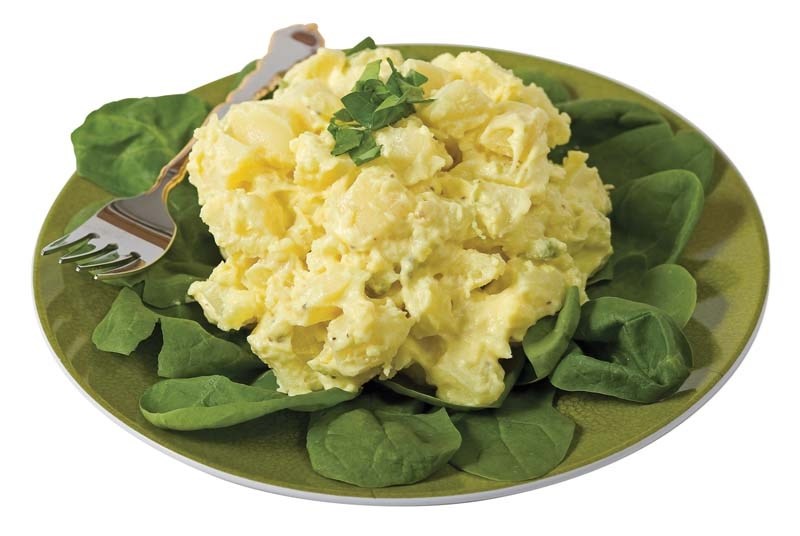We’ve all been to that kind of holiday party – the party where the tiny shrimp on the shrimp ring are limp and lukewarm and the yellow-tinged pasta salad looks like slop on your plate.
The Christmas season is a time to eat, drink and be merry, but frequent parties and meals means greater opportunity for unsafe food handling practices leading to stomach cramps, nausea, vomiting and diarrhea.
“Bacteria are very opportunistic,” said Lindsay Finnie-Carvalho, cooking instructor and owner of Nourish Me Cooking Classes in St. Albert. “All it takes is a couple (bacteria) for people to get violently ill.”
The top four pathogens, or germs, that are responsible for food-borne illness in Canada are norovirus, clostridium perfringens, campylobacter and salmonella.
Finnie-Carvalho noted one of the most important culinary rules to follow at this time of year is thawing and cooking your turkey safely.
Prepping your holiday bird is one of the main questions call-takers at the Atco Blue Flame Kitchen’s help line receive.
“Food is a part of most holiday celebrations,” said Debra Mudryk, a professional home economist.
Mudryk explained there are two safe methods to thaw a turkey: in the fridge – allowing five hours per pound (10 hours per kilogram) for thawing, or in cold water.
For the cold water method, leave the turkey in original wrapping and place in a large container, or sink, filled with cold water. Since the turkey will float, cover the top surface with a clean damp tea towel. Allow a minimum of one hour per lb. (two hours per kg) for thawing.
“If you’re doing it in the sink where the water can escape, you have to be at home where you can be monitoring it,” said Mudryk. “You cannot thaw at room temperature safely.”
The turkey should be cooked within 24 hours of thawing and fresh turkeys should be cooked by the best before date, or within two days of the packaging date.
Blue Flame Kitchen advises that for maximum safety, stuffing should be cooked separate from the turkey –whether it be on the stove top, foil pack in the oven, or in a slow cooker.
“All the blood juices from the turkey are leaking into the lukewarm stuffing and often before the stuffing is truly safe to eat, the exterior of the turkey is overcooked and dried out,” noted Mudryk, adding the turkey flavour can be replicated with the addition of turkey broth to the stuffing.
“The turkey will cook more evenly and faster because you don’t have it all plugged up with moist stuffing, which is a breeding ground for bacteria.”
Once cooked, the turkey is ready to eat when the thigh temperature registers between 180-185 F (82-85 C) in the thigh and 170-175 F (77-80 C) in the breast, on the meat thermometer.
Aside from the holiday bird, Finnie-Carvalho explained that make-ahead meals are another important component to holiday entertaining.
“It’s fun when you go to a party and you have your standard cheese platter, the veggie tray and the fruit tray, but I think it’s great when you go try new things,” she said.
At her cooking classes, run out of the St. Albert Community Hall this season, Finnie-Carvalho featured chicken skewers with accompanying dipping sauces and salad rolls. The chicken can be marinated the night before – in the refrigerator – then skewered and baked on the day of the event.
“Some things can be made ahead and some things can’t,” added Mudryk. “There should be no partial cooking of perishable food. If you cook something, cook it fully before you refrigerate.”
By abiding by Health Canada’s four food safety rules, Finnie-Carvalho said hosts and hostesses can minimize their meal prepping holiday stress.
“On the day of, you can relax a little bit and make sure counters are clean and people are dressed up nicely,” said Finnie-Carvalho. “People need to stop stressing over the details.”
Health Canada's Four Basic Food Safety Tips:
Clean: Wash hands, contact surfaces (like kitchen counters) and utensils often to avoid the spread of bacteria.<br />Separate: Keep raw foods separate from cooked and ready-to-eat foods to avoid cross-contamination.<br />Cook: Make sure you kill harmful bacteria by cooking foods to the proper internal temperature.<br />Chill: Keep cold foods cold. Bacteria can grow rapidly when food is allowed to sit in the so-called danger zone: between 4 C (40 F) and 60 C (140 F).




